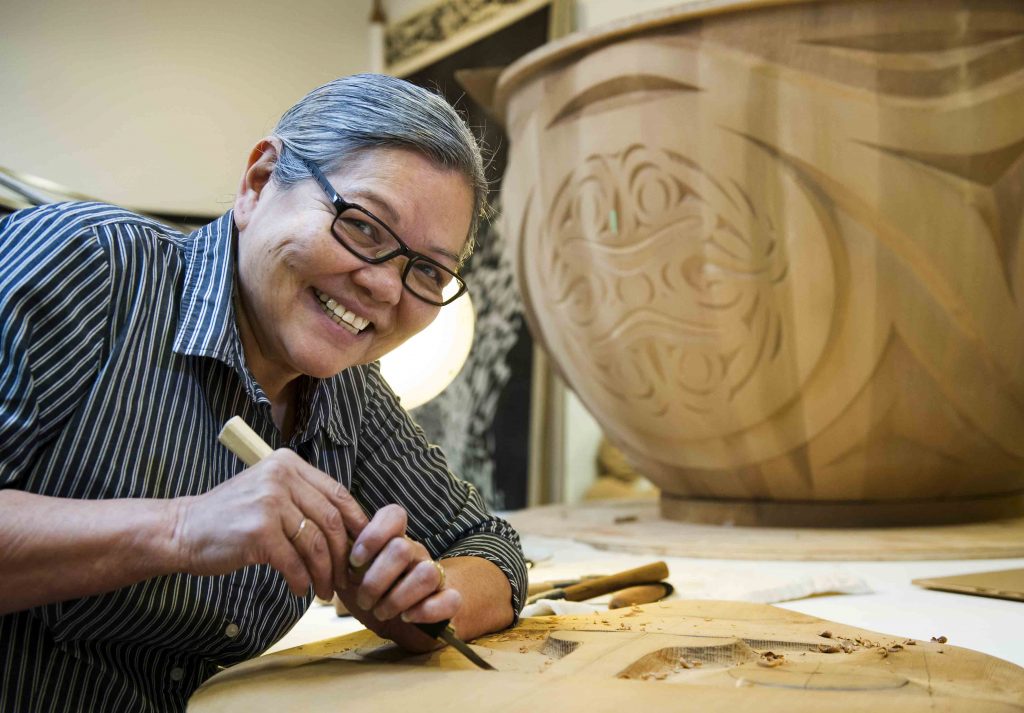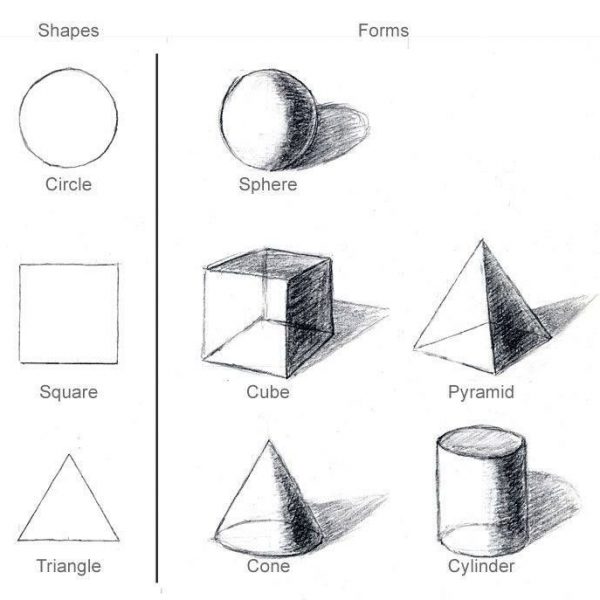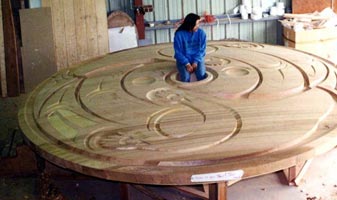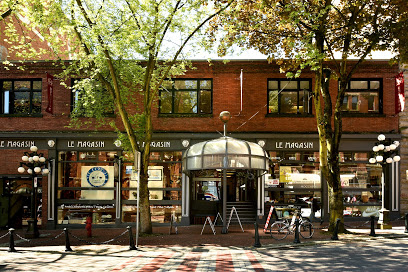Form
Form in art relates to the physical volume of a shape, and the space that it occupies. Form can be representational of actual shapes, objects, people, and animals, or it can be abstract. We most commonly see form depicted in sculptures, 3D design, and architecture; however, as soon as a shape acquires depth and becomes three-dimensional on a two-dimensional surface, it takes on form.
3D Form can be modelled, carved, or constructed. To create form using 2D media, you must construct the illusion of a 3D image. Some ways you can do this are to manipulate the use of line, texture, colour, and shape.
There are many levels to form. 3D structures that take up physical space, 2D images that provide the illusion of 3D, and optical illusions that are created using 2D images.
Artist: Susan Point

– Susan Point
Susan A. Point was born in 1952, a descendent of the Musqueam people. She is a Coast Salish Artist who currently resides in Vancouver, BC. Susan has imbued the values of her culture into each piece of art that she creates.
Susan has been recognized with a variety of achievements including: an Indispire Achievement Award, and a B.C. Creative Achievement Award. She was appointed as a lifetime member of the Royal Canadian Academy of Arts, she was selected to the International Women’s Forum, she was listed one of B.C’s 100 most influential women, and she was one of Vancouver’s 2012 Remarkable Women.
Points Style and Technique
Point draws inspiration from the stories of her ancestors to create each piece. She combines this with the use of non-traditional materials and techniques. Her artwork is inspired by new situations and new experiences.
Five Salmon Panel
Five Salmon Panel was made using Red Cedar Wood as the primary medium. Five Salmon Panel is currently on display at the Coastal Peoples Fine Arts Gallery in Vancouver, B.C.
Unlike 2D art, 3D art that represents form takes up physical space. All Coast Salish carvings whatever the medium are prime examples of 3D form. Point has a number of different carvings in private collections, displayed in public areas, and exhibited in galleries all over B.C.
Click through the slide show to see more art by Point.
Now it’s your turn to be inspired!
As you can see from Susan Point’s art, she fully immerses herself in the process. She often uses animals that are important in Coast Salish culture within her work. Channeling Point’s passion for her work, choose an animal that is important to you, and begin creating your own sculpture. We recommend using polymer clay, but feel free to use any medium you are comfortable with. Use the suggestions below, or watch the video to help provide ideas as needed.
- Turn the animal into an everyday object
- Make the animal a decoration on a plaque
- Distort one or some of the animals features
- Enlarge one of the animals features
- Add a second or third animal to your sculpture
- Repeat the animal you have created in mirror image
Coastal Peoples Fine Arts Gallery
332 Water Street, Unit 200, Vancouver, BC, Canada V6B 1B6
Exhibit your Coast Salish Inspired Art!
Can you imagine seeing your work displayed in an actual museum? Well here is your chance! Virtually hang your artwork, alongside Point’s Five Salmon Panel at the First Peoples Fine Arts Gallery!
Follow the directions below to add your masterpiece to the map:
- Click on the ‘Seven Elements of Art Form’ link below.
- Select one of the seven categories
- Upload a picture of your art as the “featured image”.
- Under Post Title: put your First Name and Grade (Louise, Grade 5).
- Copy and paste the gallery address above to the Location field.
- For the Post Content section, answer any questions that were asked within the lesson, or tell us a bit about what inspired you to create your art and how you created it!
- Click Submit to drop your pin in the map so that others can view your art at the gallery.


